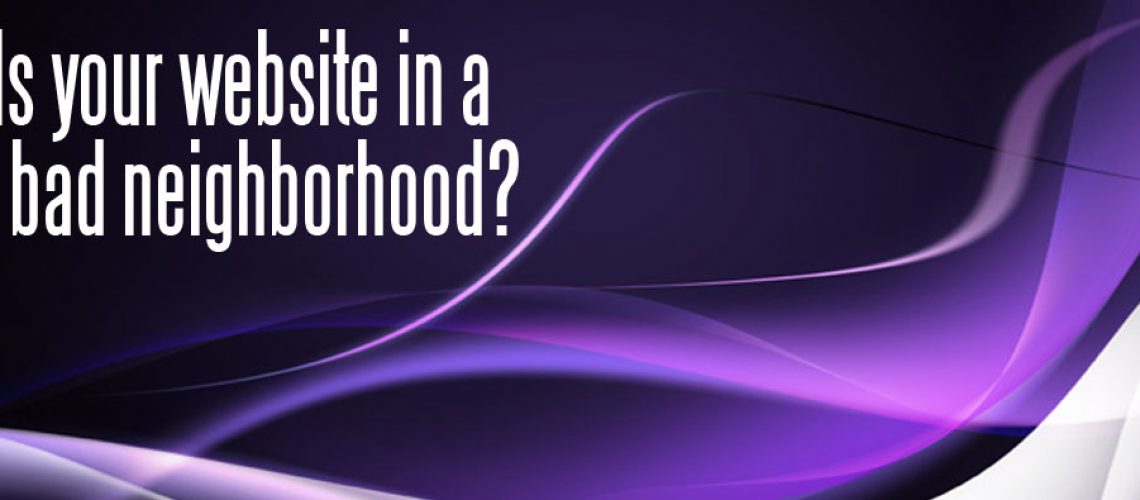Not to long ago I read a post by someone who was selling links on their website. I clicked his link to see his page and found it had like 80 links on there. It was a PR 1 site that isn’t that great but throw in the fact that the page is nothing more than link spam or a “Bad Neighborhood” as Google calls it. So that $10 for a link on his website would end up actually costing you more than you spent because you would get a bad neighborhood penalty.
Google says to avoid links to web spammers or “bad neighborhoods” on the web, as your own ranking may be affected adversely by those links.
So what specifically does Google define as a web spammer or bad neighborhood site?
- Buying or selling links that pass PageRank. This includes exchanging money for links, or posts that contain links; exchanging goods or services for links; or sending someone a “free” product in exchange for them writing about it and including a link
- Excessive link exchanging (“Link to me and I’ll link to you”)
- Linking to web spammers or unrelated sites with the intent to manipulate PageRank
- Building partner pages exclusively for the sake of cross-linking
- Using automated programs or services to create links to your site
But the reality of the situation is, most people do trade links or buy a link or two. I don’t but I have many many friends who do and I completely get why they do. So now we know what Google says we need to ask ourselves in reality, what is a web spammer?
I often say things like a spam site is any site that has more outgoing links than it does content. That sounds great but what does it really mean? Can we put an actual number on that? Truth is, I can’t. Google doesn’t reveal their formula for detecting spammers or link farmers but through the years I’ve personally avoided sites with more than say 20 to 25 links on a single page. But truth is, it’s probably more like 40 to 50. I just like to err on the site of safety.
So if you come across some site that has a bunch of text links on it. That right away should put up a red flag with you.
You could go to Google and check to see if the site is banned, as often Google bans sites like that but not always. To check to see if a site is banned on Google go to Google.com and enter this in the search box – site: URL.
If your query into a site at Google returns no results that means the site is banned and well that one is obvious … that one you just flat out don’t want you link in any way associated with that site. But there are a lot of spam sites out there not banned so the only way to know if to use common sense. If you find a website with a bunch of text links, don’t add yours to that mess. It really is that simple.
That is the best way to keep your site out of bad neighborhoods. If you find your site is on a bad site and can’t get them to remove it simply use the newly released disavow links tool from Google Webmaster Tools. Bing also has a similar feature in their own webmasters tools section of their site.
Some people have asked me to be more clear on how all this penalty stuff works. This is a very simplistic description but know in reality it’s a much more complex process.
Once you put your website up on the internet you get a score of 0. Search engines like Google and Bing will index your website and you may start to get a little bit of traffic from them including you in their database but you aren’t really all that trusted of a source since you a new site with an authority level of 0.
You add Google analytics to your website and you see that you’ve done such a great job making your website and it’s so beyond fabulous that you have a very low bounce rate and people who visit you stay on your site an average of 2+ minutes. This is great and because of the high quality of your website google has now given you some more bonus points. We don’t really know how many bonus points you get for that kind of stuff but for fun we’ll just say 10 points.
You have a couple friends (let’s with 5 of them) with websites and they each provide a link to your site. Their sites aren’t really all that great or well known, none of them are over a PR1 but hey, a link is a link, right?
Well their 5 links equal about 1 point (if even that).
One day you post some information that is really informative and some big site links to it. That site is a PR5 site. That single PR 5 link just gave you 5 points.
Now your 0 site has 16 points. You are off to a great start! As time goes you will get more points and become even more “authoritative” in the eyes of Google and get even more traffic from Google as a result.
Then one day for some reason you decide to buy a link on some page that is later deemed by Google as a bad neighborhood. Now you lost 25 points. So your 16 points is now down to -9.
So now you see how it all works. Of course there is much more that goes into the whole SEO process but that scenario will at least give you the basic idea.

